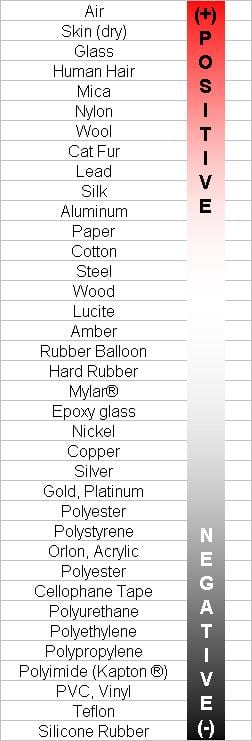Van De Graaff Accelerators
Overview
A Van de Graaff generator uses a moving belt to accumulate a large electric charge on a hollow metal sphere situated atop an insulated column. Although Van de Graff generators are most commonly known for their use in creating entertaining static discharges (and making people’s hair stand up), they are able to produce potentials as high as 25 megavolts. This means that, although they are no longer in clinical use, a Van de Graaff generator can be used to accelerate electrons to clinically useful energies.
Theory of Operation
- The Triboelectric Effect causes a buildup of charge between the rubber belt and the acrylic or glass bottom roller. This combination causes the lower roller to become positively charged while the belt becomes negatively charged.
- Note that the actual material of the bottom roller may be any material at the extremes of the triboelectric series.
- A voltage of 20-30kV is applied to the Charge Sprayer. The charge sprayer is a metal brush not in contact with the belt.
- The voltage applied to the brush induces an electric field between the charge sprayer and the rubber belt. This electric field causes a coronal discharge, spraying electrons onto the outer surface of the belt.
- The motor turns the lower roller and moves the belt, carrying its negative charge, upward.
- A second coronal discharge allows the charge collector to collect the charge from the belt which is then conducted to the dome. This process is aided by using a triboelectrically negative material (such as teflon) for the upper roller.
- Electrostatic induction causes a buildup of electrons on the outer surface of the dome. This results in a large voltage potential (up to 25MeV possible but 2-10MeV is more typical).
- The charge built up on the dome is to used accelerate electrons, liberated from a filament by thermionic emission, down an accelerator tube.
- The electrons undergo Bremsstrahlung interaction with a high Z target at the end of the accelerator. This generates the photon beam.
Triboelectric Effect
The triboelectric effect is a method of charge collection in which certain materials exchange charges after they come into and leave contact with a different material. A simple demonstration of the effect may be performed by rubbing a balloon on your hair. This will charge the hair causing it to stand up!
Coronal Discharge
A coronal discharge is an electrical discharge caused by ionization of a fluid (or more often a gas) surrounding a charged conductor. It is often present in situations where a high electric field gradient arises and is used in a Van de Graaff generator to transfer charge to and from the belt.

Navigation
Not a Premium Member?
Sign up today to get access to hundreds of ABR style practice questions.


